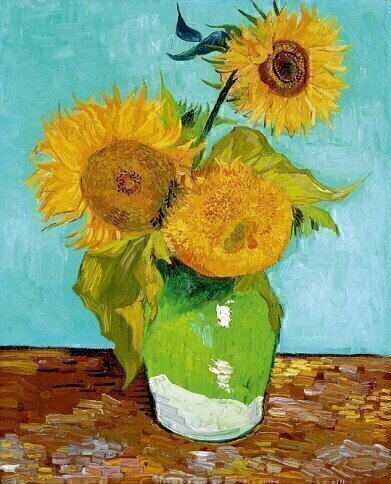HPLC, UHPLC
Uncovering Art’s Mysteries with Chromatography
Jan 27 2015
Eggs, glue and vegetable oils are three of the things that art conservationists find in paintings — and these are not objects painted by Rembrandt or Van Gogh (although his Sunflowers might yield a small drop of oil). They are compounds that the artist used in the manufacture of his paint — specifically they bind the pigment together to produce the finished paint. Modern analytical techniques — including chromatography — help conservationists and other researchers to understand how a painting was made, what materials were used and what restoration it has undergone previously. This knowledge can allow them to repair and protect valuable paintings — it can also help to detect fake paintings. Let’s take a look at how chromatography can help peel back the layers on art.
Anatomy of a Painting
Old paintings generally consist of three layers — canvas, paint and varnish — and to make sure a painting can be preserved, the conservationist needs to know the make-up of each of them. Chromatography is an ideal tool to aid researchers in their identification of the various components used in each of the layers.
Varnishes are applied to paintings for two main purposes: as a protective coating or to add an effect to the finished painting — although not all artists like to add varnish as discussed in this article on Van Gogh. An outer clear varnish can stop atmospheric pollutants and chemicals causing deterioration to the surface layers of a painting through chemical reactions. The types of varnish changed through the years and a restorer cannot rely on the age of the painting to determine the varnish type as the painting may have been cleaned or restored previously — so chemical analysis is necessary.
Gas chromatography coupled with mass spectrometry (GC-MS) is often used to analyse varnishes and outer coatings on paintings.
Binding the Pigments
Paint is made of two main ingredients — pigment for the colour, and binder to hold the pigment together and allow the paint to spread and dry. There are many different binders used, and they are generally organic in nature: this is where the egg yolk, glue and oil come in — they have all been used as binders in works of art.
Pigments are the components that give colour to the paint — and are generally mineral or organic in origin. Natural organic pigments include the colours obtained from plants and animals; whilst alchemy gave the artists artificial inorganic pigments including metal based pigments that gave rise to the problem known as ‘lead soap’.
Separating the Layers
Chromatography is the science of separation, and both HPLC and GC have a role to play in analysing art. Alongside GC-MS, the technique of pyrolysis GC-MS is used to identify the components in varnishes and binders. Pyrolysis is a way of thermally decomposing the larger sample molecules using a hot filament to produce smaller volatile molecules that can be analysed using GC-MS.
HPLC is used by art conservationists to analyse the organic molecules from naturally produced pigments that are non-volatile.
Digital Edition
Chromatography Today - Buyers' Guide 2022
October 2023
In This Edition Modern & Practical Applications - Accelerating ADC Development with Mass Spectrometry - Implementing High-Resolution Ion Mobility into Peptide Mapping Workflows Chromatogr...
View all digital editions
Events
Apr 28 2024 Montreal, Quebec, Canada
May 05 2024 Seville, Spain
May 15 2024 Birmingham, UK
May 19 2024 Brno, Czech Republic
May 21 2024 Lagos, Nigeria














